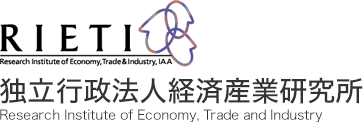| 執筆者 | 北尾 早霧(ファカルティフェロー)/武田 望(ミネソタ大学) |
|---|---|
| 発行日/NO. | 2025年11月 25-E-110 |
| 研究プロジェクト | 家計の異質性、個人・家族とマクロ経済 |
| ダウンロード/関連リンク |
概要
本稿では、複数の国・地域から構成される世代重複(OLG)モデルに外国人労働者の就労地意思決定を内生的に組み込み、高齢化が進む日本における外国人労働者のマクロ経済的および財政的影響を定量的に分析する。モデルでは、主要な送り出し国からの外国人労働者が、日本と外国における賃金成長や人口動態、財政政策の違い、保有資産や集積効果を考慮して意思決定する仕組みをモデル化する。過去10数年にわたる外国人労働者数の推移を再現したうえで、そのシェアが2040年代にピークを迎えた後、送り出し国の賃金上昇や少子高齢化の進行に伴って減少に転じることを示す。外国人労働者の流入は、労働供給や産出量の減少を一定程度緩和し、財政への圧力を和らげる効果を持つものの、その寄与は限定的であり、長期的には高齢化の構造的影響を根本的に解消する手段とはなりにくい。これらの結果は、少子高齢化が進む経済における長期的な財政持続性を評価する際に、外国人労働者の移動行動を内生的に取り込むことの重要性を示唆している。
概要(英語)
This paper develops a multi-region overlapping generations model with endogenous migration to quantify the macroeconomic and fiscal effects of foreign workers in aging Japan. Migration decisions are modeled explicitly, driven by cross-country differences in wages, demographics, and fiscal systems across Japan and the countries from which the migrants originate. The calibrated model replicates the sharp rise in Japan’s foreign workforce over the past decade and projects that their share will peak in the 2040s before declining as demographic and wage trends in source countries evolve. Foreign workers modestly mitigate the decline in labor supply and output and ease fiscal pressures, though their contribution remains partial. The findings highlight the importance of incorporating endogenous migration in assessments of long-run fiscal sustainability in aging economies.

